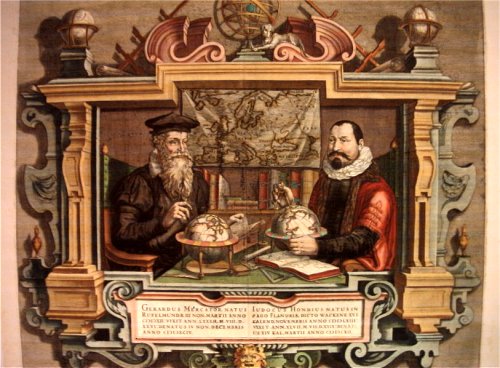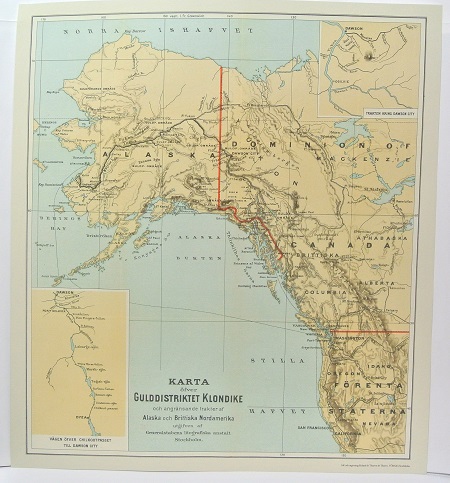1440-1514. Född och död i Nürnberg.
Tysk läkare och historiker. Studerade först vid universitetet i Leipzig där han år 1459 blev magister. Facken var de vanliga lärdomsämnena. Senare specialiserade han sig på läkarvetenskapen och tog 1466 en medicinsk doktorsgrad i Padua. Efter flera års verksamhet som läkare i olika städer verkade han från 1484 i Nürnberg. Redan som student visade han starkt intresse för historia. Han bedrev bl.a. en betydande samlarverksamhet, speciellt av handskrifter av olika slag och han blev efter hand väl ansedd i ledande humanistkretsar. På uppdrag av den berömde boktryckaren Anton Koburger utarbetade han en världskrönika som kom ut 1493 på latin och tyska, och senare i flera utgåvor. 'Nürnbergerkröniken' är inte något självständigt forskningsarbete utan ett resultat av Schedels samlarverksamhet. Det som är av störst intresse är illustrationerna, som utfördes i träsnitt av Michel Wolgemuth och Wilhelm Pleydenwurff. Med sina 1.809 träsnitt är boken det rikast illustrerade tyska verk från 1400-talet.
Bland arbeten.
Nürnbergerkröniken.
Haitz. - Lex. d. Buchw.
HURTER [HURTERO], JOHANN CHRISTOPH.
Alemannia siva Sueaviae superioris Choro. 1625, used by Blaeu 1634 & c.
Bland arbeten.
Alemannia siva Sueaviae superioris Choro.
Tooley.
1784-1870. Född i Nagu socken, Åbo och Björneborgs län, Finland, död i Stockholm.
Finsk-svensk officer och kartograf. Son till kaptenen Gabriel August Hagelberg och Anna Lovisa Qvick; u.ä.-dotter till fältmarskalken greve Augustin Ehrensvärd. Hagelstam utmärkte sig som officer i finska kriget och i sjömätningsarbeten. 1810 utnämnd till kapten i den nyupprättade Sjömätningskåren, och avancerade senare till överste. 1814 var han den svenska regeringens kommissionär i Köpenhamn vid överlåtelsen av norska kartor och andra arkivalier rörande Norge. Initiativtagare till Väddö kanal i Roslagen. Hagelstam utarbetade ett flertal kartor över Sverige och Norge, för detta arbete adlad 1818. Som riksdagsman var han en ivrig nykterhetsförespråkare och medverkade till att brännvinsskatten lades om 1855 och att husbehovsbränningen förbjöds 1860. Medlem av Krigsvetenskapsakademin och utgivare av flera militära skrifter om Sveriges kust- och havsförsvar. Hagelstam var gift med Eva Fredrika Burenstam (1791-1877), genom vilken han ärvde Stjärnsunds slott i Askersunds landsförsamling, som han 1823 sålde till k...
Bland arbeten.
Ska artikeln hit?
Gulddistriktet Klondike - ca 1897.
Vårfryle, Luzula pilosa - Lindman, C. A. M, Bilder ur Nordens Flora 1917-26.
Olaus Magnus text till den berömda kartan "Carta Marina".
Texten finns även på katalanska, spanska och engelska.
Bureus karta över norden
Kartor och atlaser
Bilder och planschverk
Teckenförklaringar

Porträtt på Gerard Mercator och Jodocus Hondius.
"Striking image showing Mercator and Hondius in their idealized workshop.
This famous portrait of two of the most important mapmakers during the Golden Age of Dutch cartography was engraved by Coletta Hondius, as a tribute to her late husband, shortly after his death. Gerard Mercator is shown with his successor, Jodocus Hondius, seated at a table surrounded by the implements of their trade. The fine portrait is set within an elaborate strapwork framework that includes a wall map of Europe.
Gerard Mercator is renowned as the cartographer who created a world map representing new projections of sailing courses of constant bearing as straight lines—an innovation which, to this day, enhances the simplicity and safety of navigation. In his own day, Mercator was the world's most famous geographer. He created a number of wall maps early in his career, as well as one of the earliest modern world Atlases in 1595. Although this was the first appearance of the word Atlas in a geographical context, Mercator used it as a neologism for a treatise on the creation, history and description of the universe, not simply a collection of maps. He chose the word as a commemoration of King Atlas of Mauretania, whom he considered to be the first great geographer.
Jodocus Hondius was a Dutch engraver and cartographer. He is best known for his early maps of the New World and Europe and for continuing publication of Gerard Mercator's World Atlas. He also helped establish Amsterdam as the center of cartography in Europe in the 17th century. In England, Hondius publicized the work of Francis Drake, who had made a circumnavigation of the world in the late 1570s. In 1604, he purchased the plates of Gerard Mercator's Atlas from Mercator's grandson and continued publication of the Atlas, adding his own maps over the next several decades. Hondius later published a pocket version Atlas Minor."



